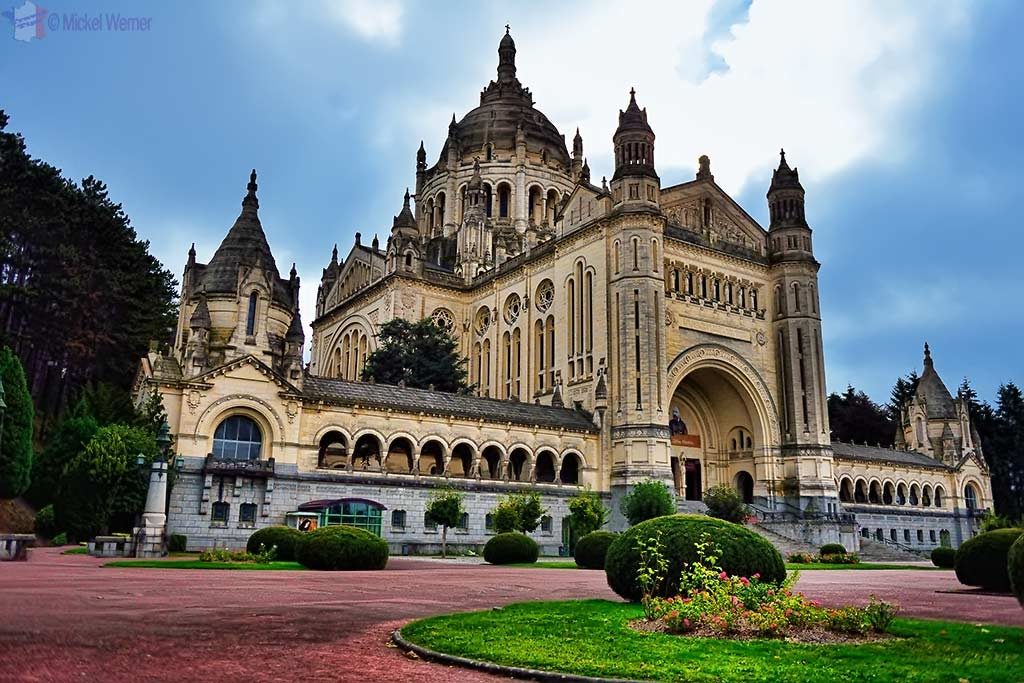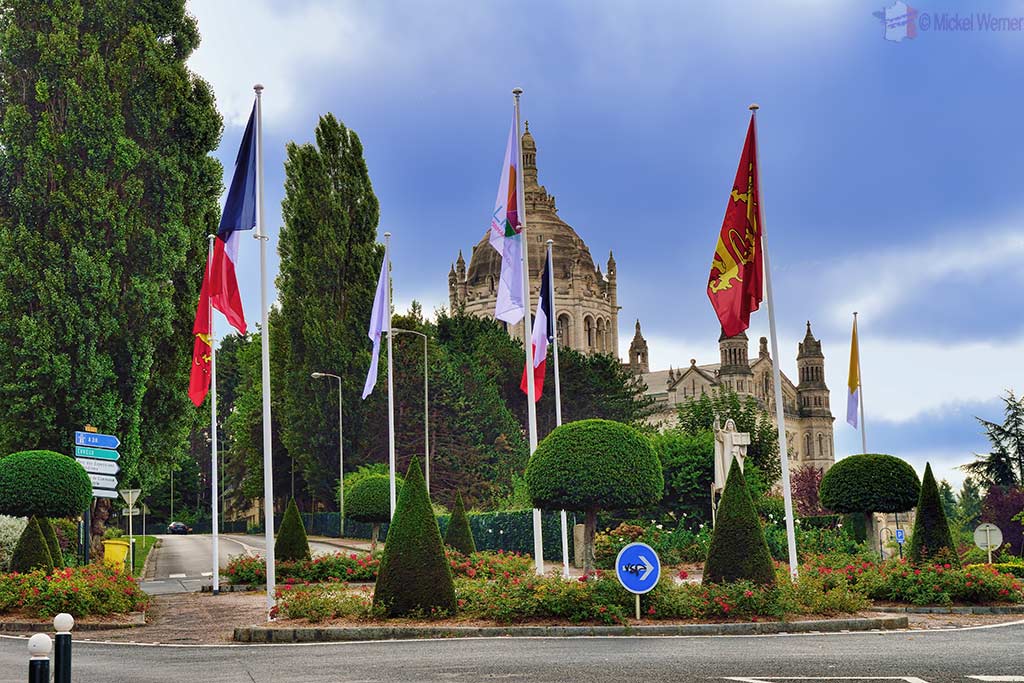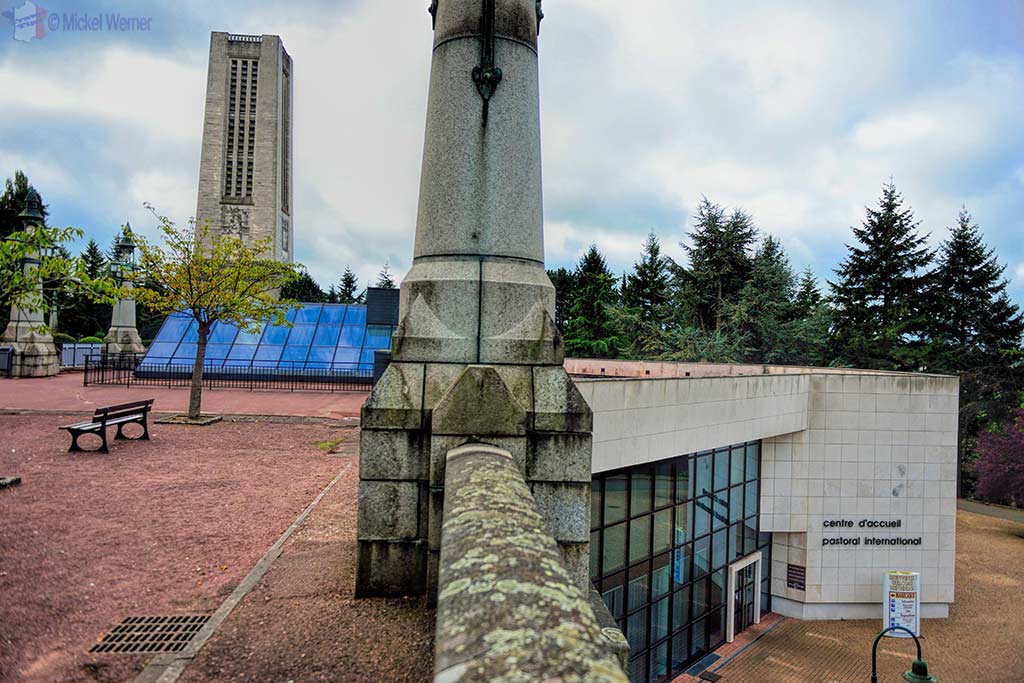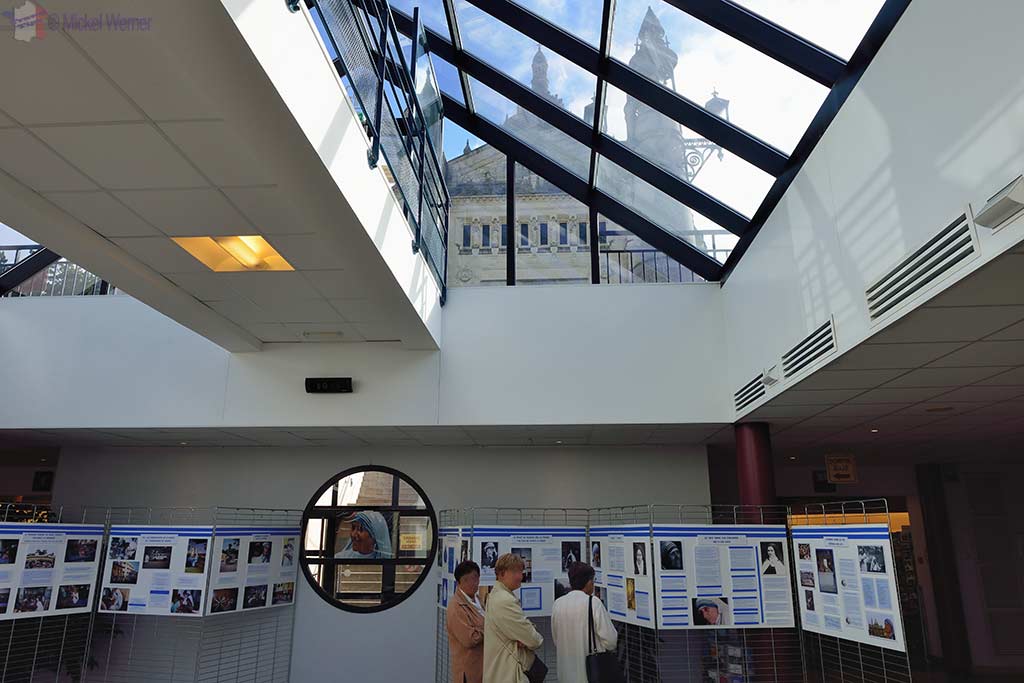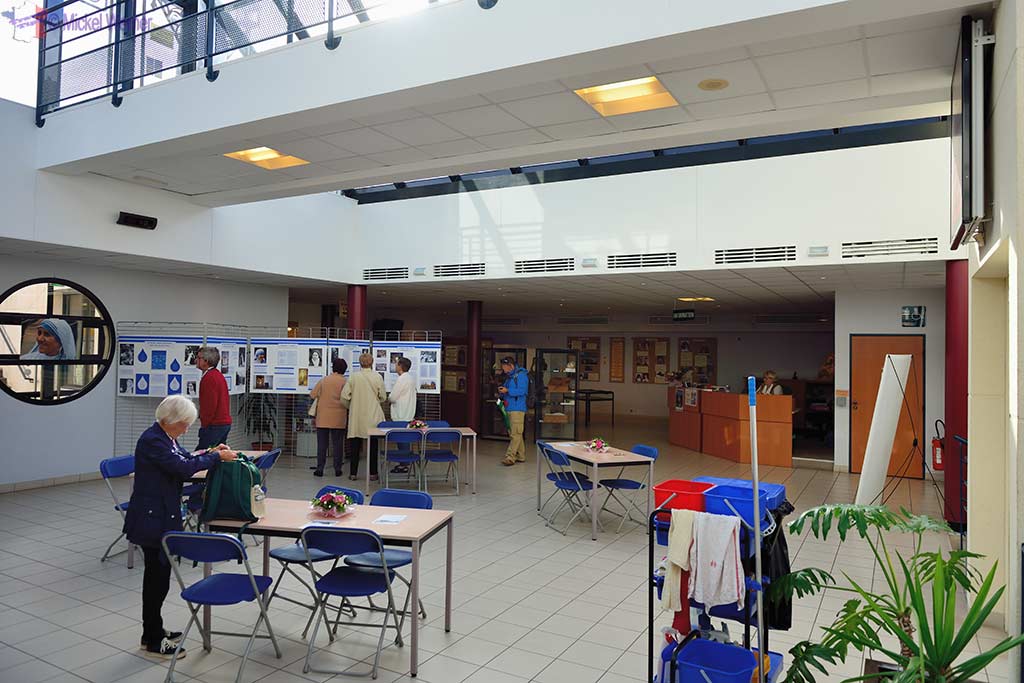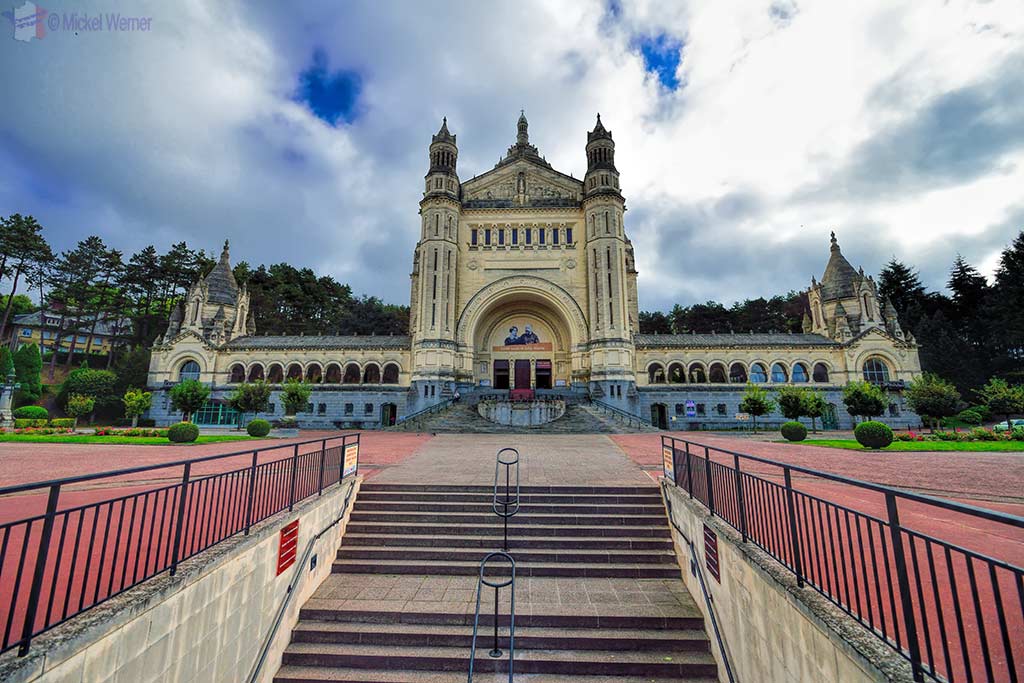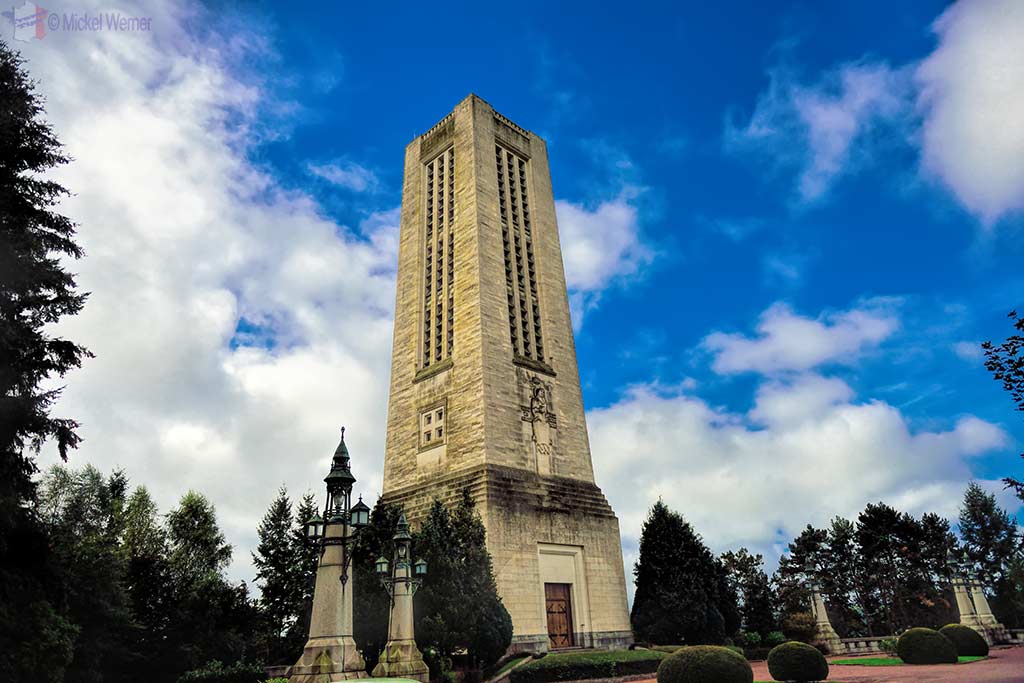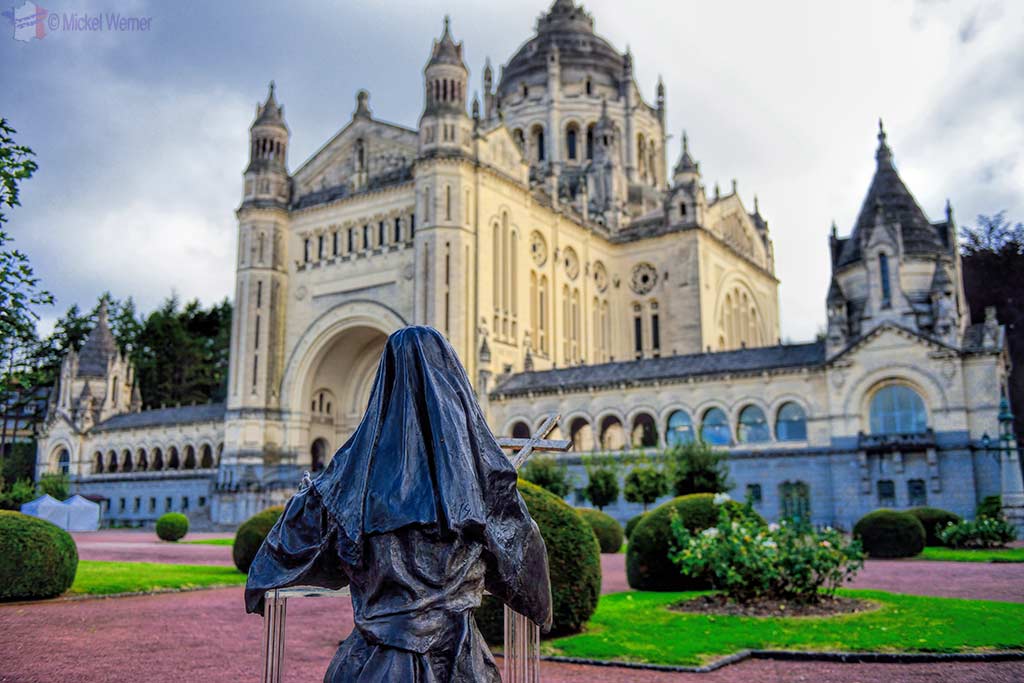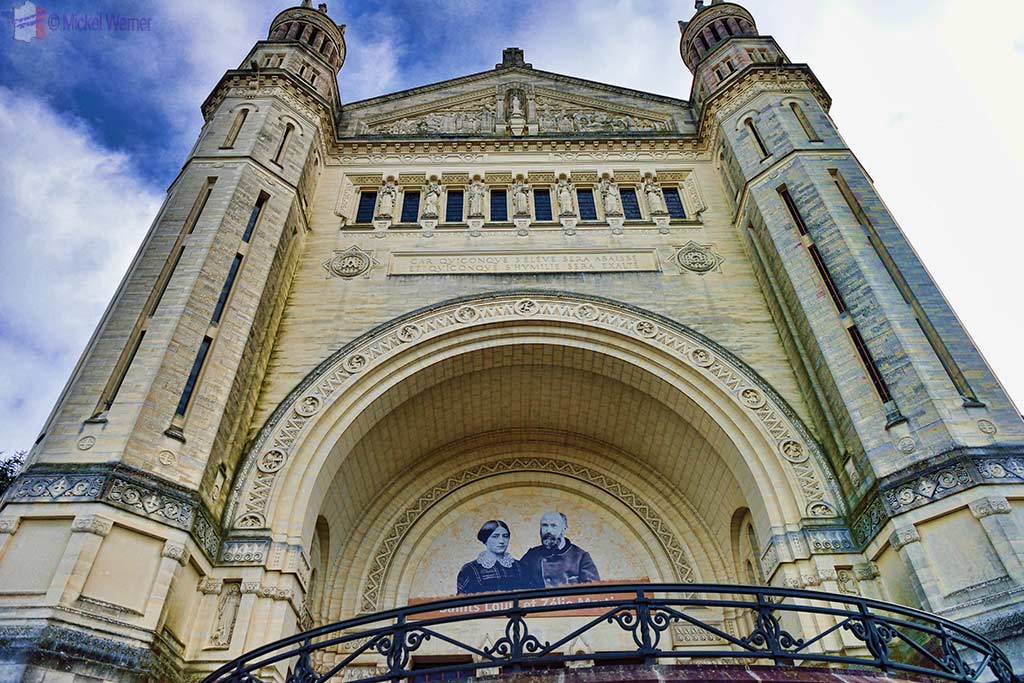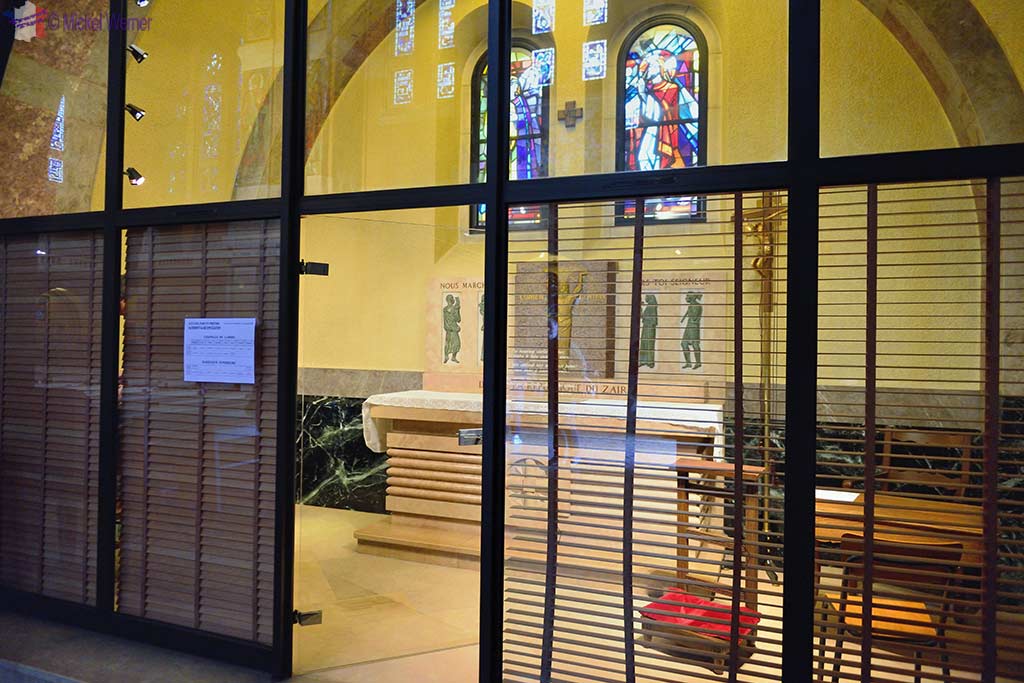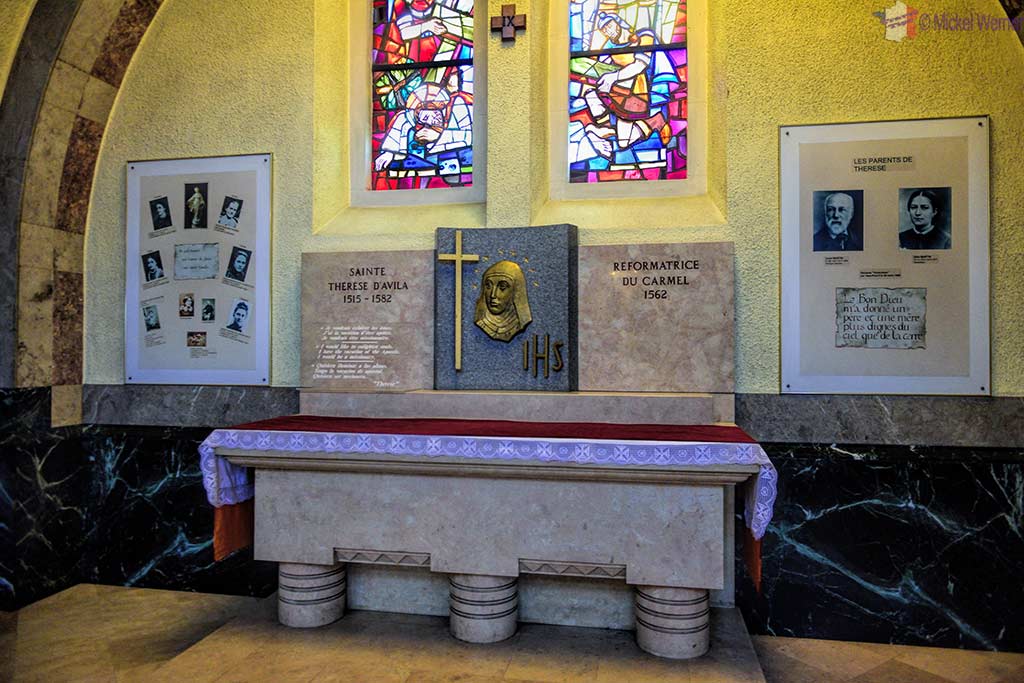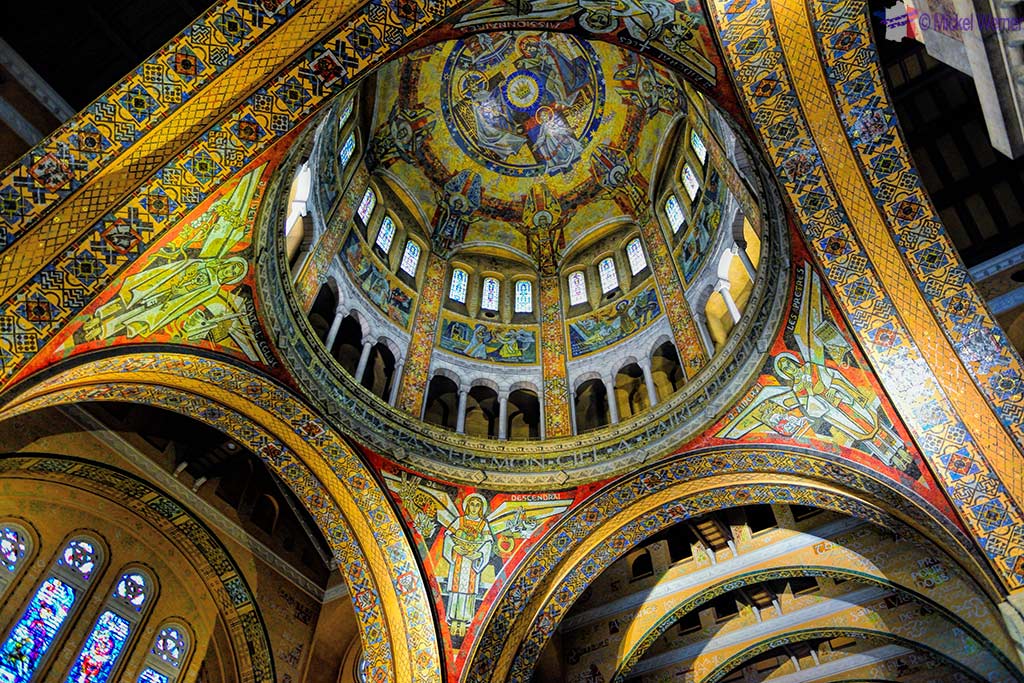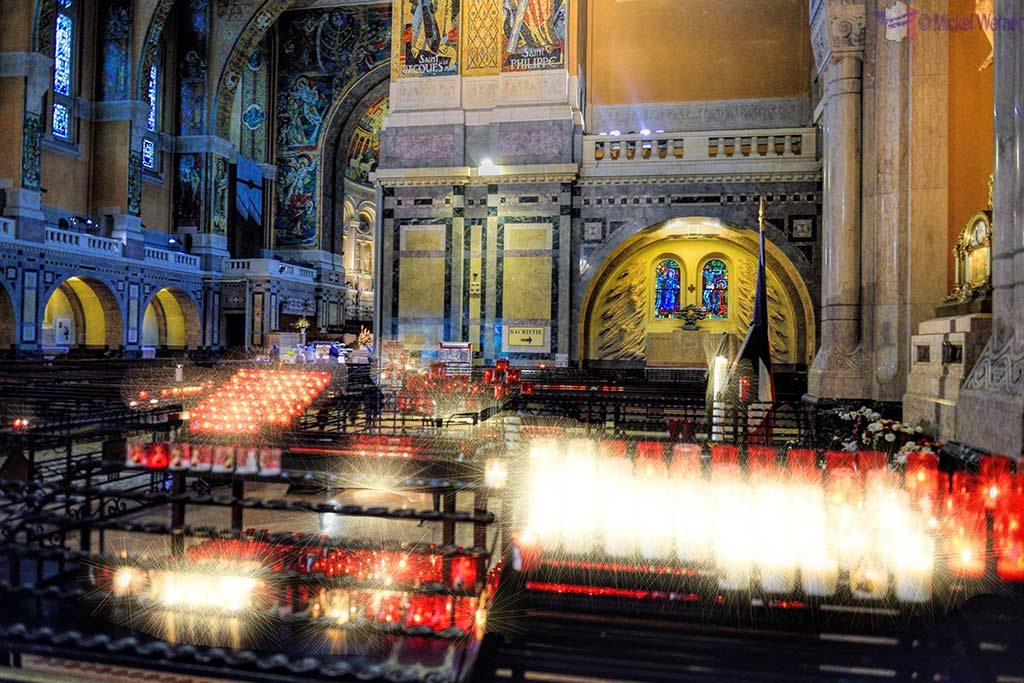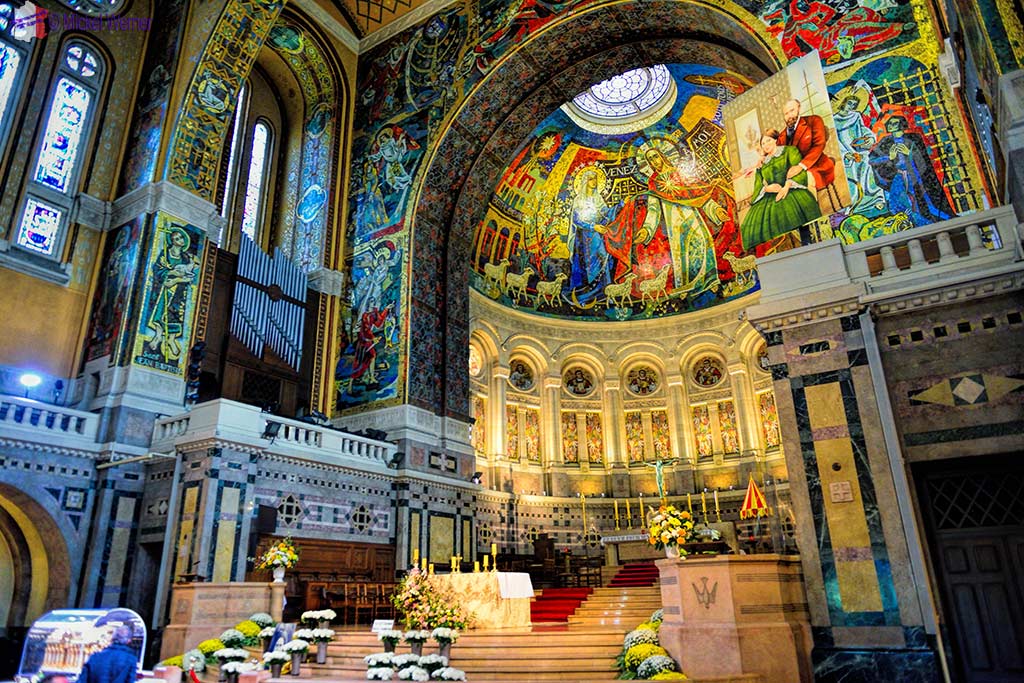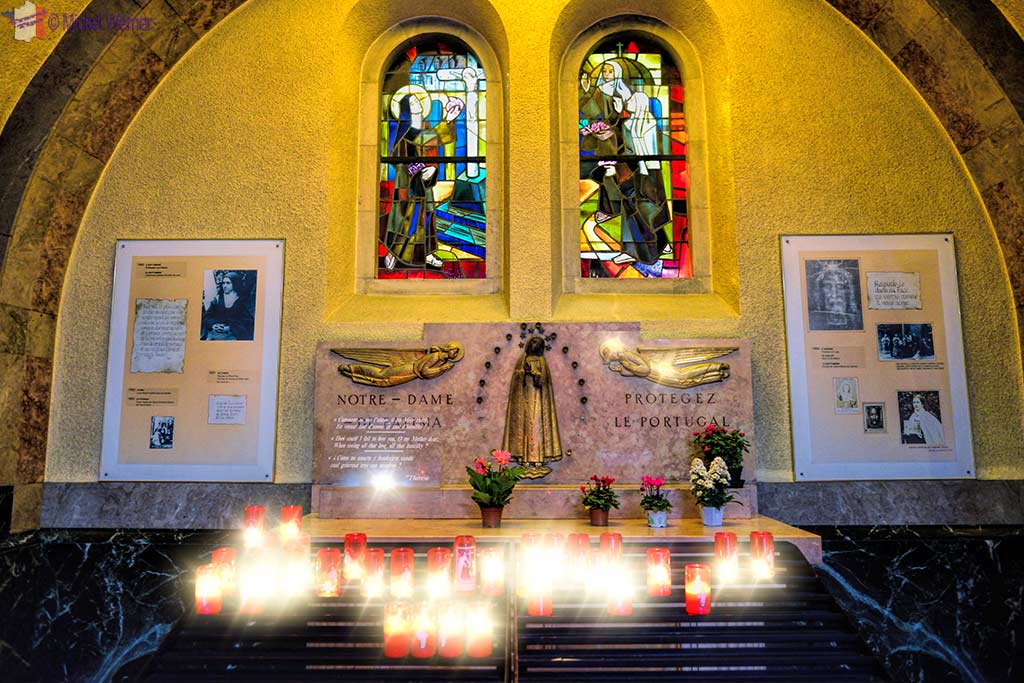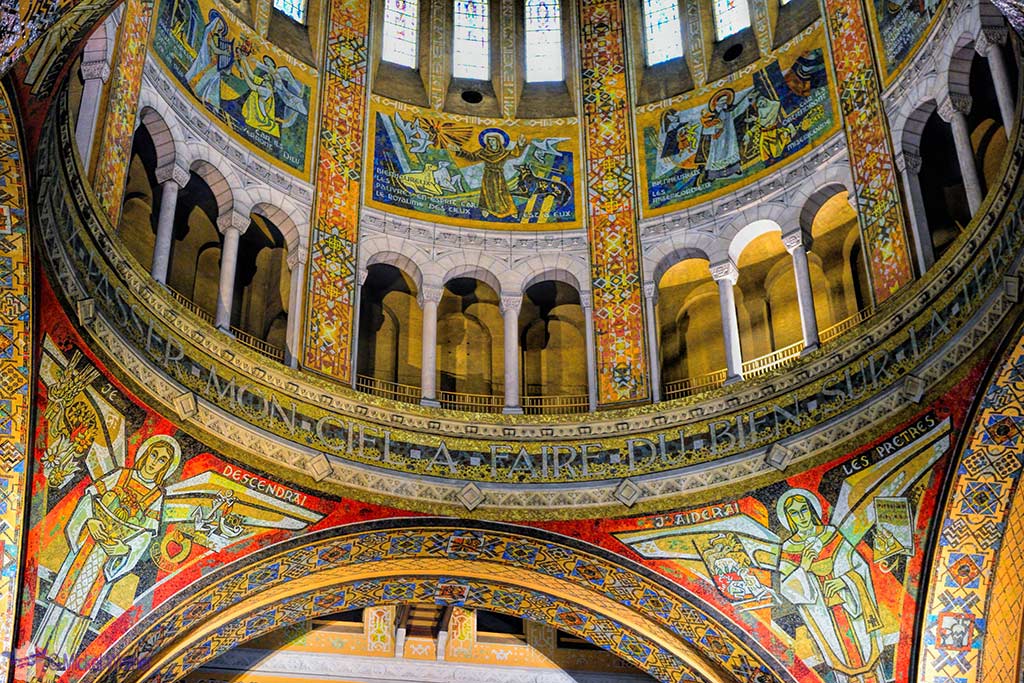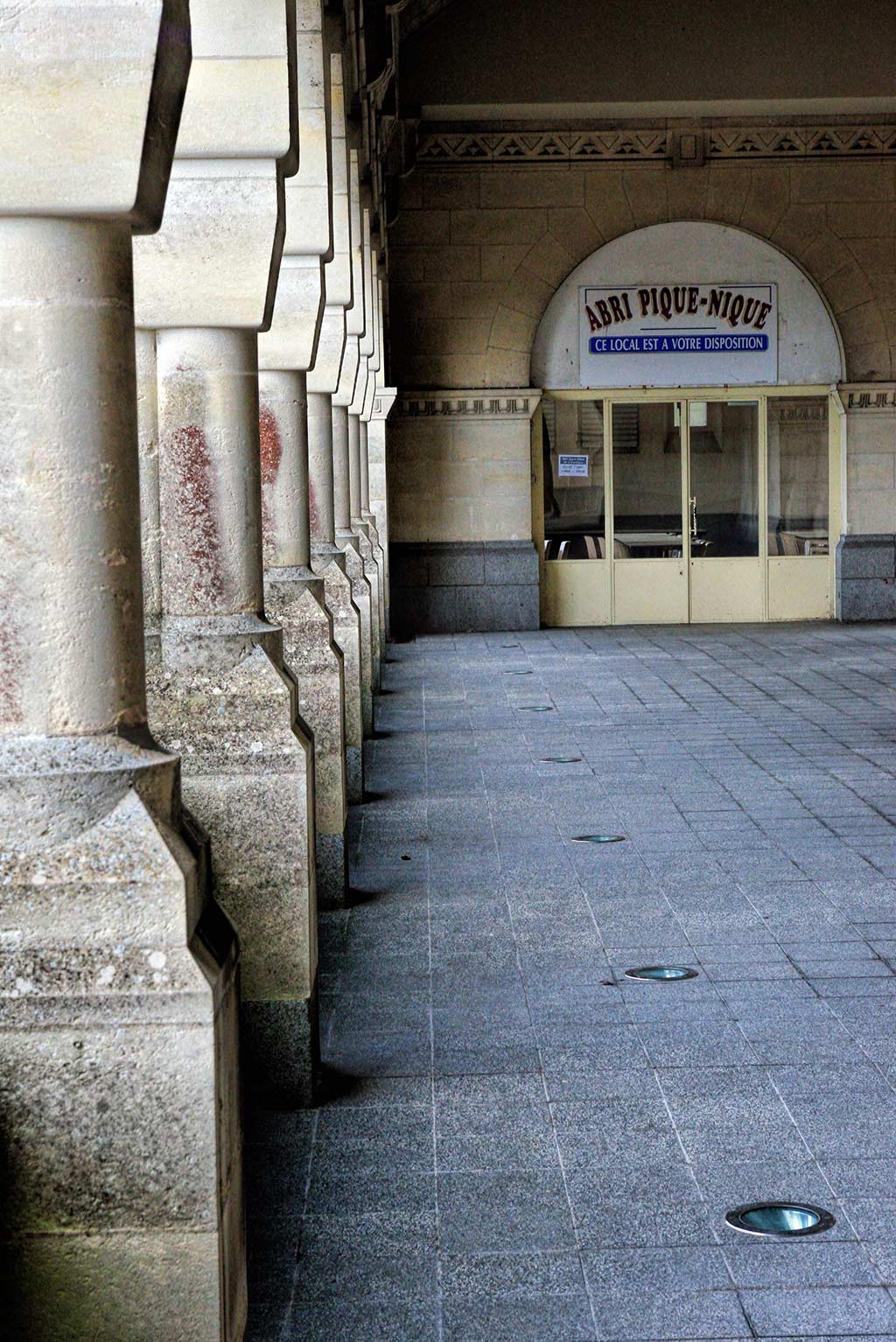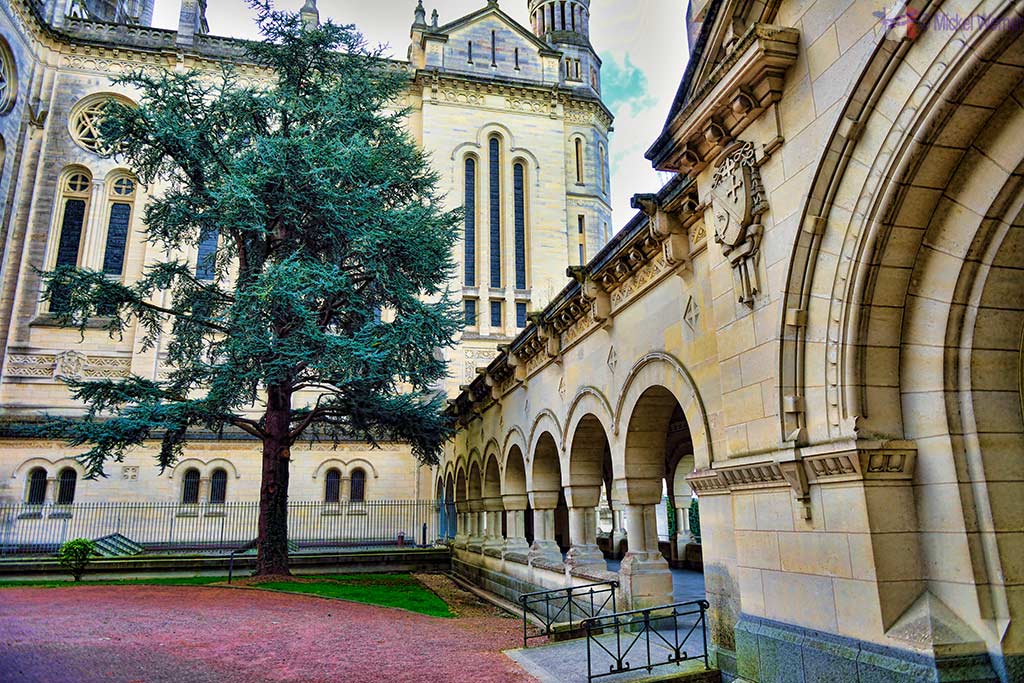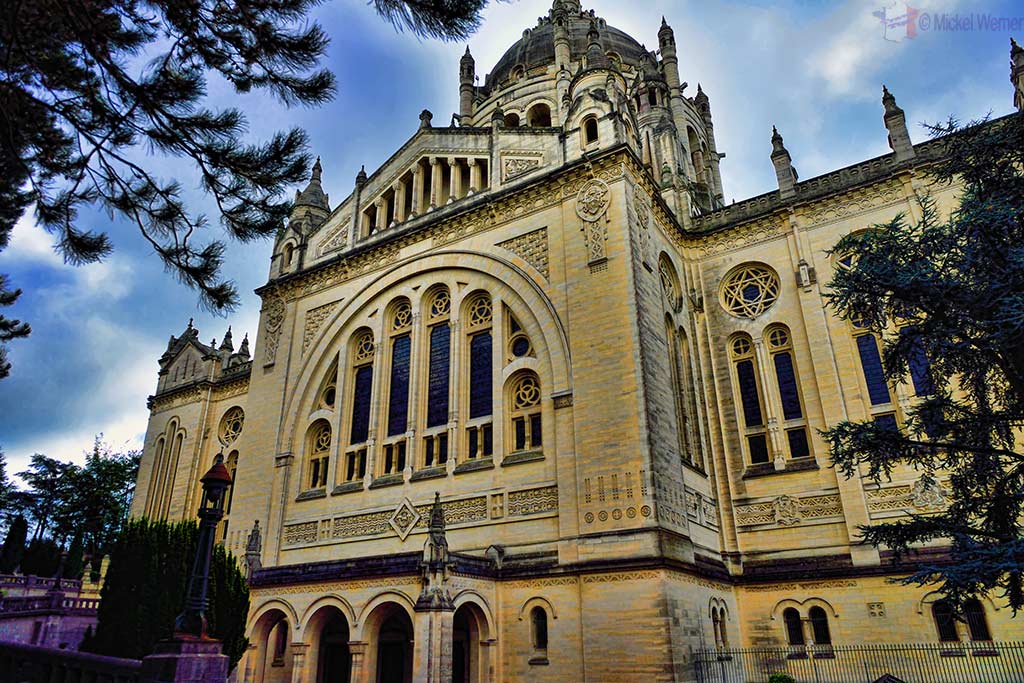The Basilica of Saint Therese in Lisieux is one of those buildings that is definitely worth a detour, even one of hundreds of kilometres. It is France’s second most visited pilgrimage site (after Lourdes), with 2 million visitors per year. It could be qualified in one word: imposing!
The Basilica is located quite close to one of the major North-South motorways on the West coast (close to Deauville), the A29.
The church is dedicated to Saint Therese of Lisieux, a Carmelite nun popularly known as “The Little Flower of Jesus” or “The Little Flower“. She was born in 1873 and died in 1897 aged 24. To read more about her, her life and why she is a saint, click here.
Click here to read more about the city of Lisieux where you will find the basilica.
The basilica is perched high on top of a hill overlooking the city of Lisieux in Normandy. The church can be seen from most places in the city. The basilica is one of the biggest church constructions of the 20th century.
The building of the basilica started in 1929 and was finished in 1954 (with an interruption during WWII). Although the World War II bombings damaged most of the city, the basilica managed to escape mostly intact. The financing of the church was 100% private with donations from all over the world.
Three generation architects worked on the project; Cordonnier – grandfather, father and son.
In front of the building, to the right, is a very tall bell tower (more about it lower down). Several large car parks surround the church on all sides, discretely hidden away.
On the ground floor, below the basilica, is a pastoral building that receives all international visitors on a pilgrimage.
Two floors of information stands can be found inside the pastoral centre. St Therese’s bed is on display here.
From the pastoral building you will find a set of stairs leading to the basilica (there is also an elevator).
The bell tower was built in the 1960s but was never totally finished. The tower contains 51 bells, and twice a day it gives a concert. Apparently as bell towers go, it has one of the best sounds in Europe. The tower was donated by Belgium and The Netherlands.
In front, next to the bell tower, you will find a life-size statue of Saint Therese on her knees worshipping.
Now let’s have a visit inside the basilica….. (the two people decorating the front of the church are Therese’s parents, both are also saints).
The immensely beautiful basilica can seat 4000 people with an unrestricted view of the altar.
Below the church itself is the crypt. Below you will find a 360° photo (courtesy Google):
Click on the photo and drag left, right, up and down to see more of the crypt.
Once inside, on the right you will find the “duty priest” office.
There are 18 altars on both sides of the church, donated by (starting at the entrance, counter clock wise): Mexico, Spain, Italy, Ukraine, Chile, Brazil, Argentina, Portugal, USA, Colombia, United Kingdom, Scotland, Germany, Cuba, Ireland, Canada, Belgium and Poland.
The dome stands 95 meters (104 yards) above the ground and the church inside has a surface of 4500 m2 (48500 square feet).
On both sides you will find small chapels.
On both sides of the main altar you will find two organs that were built in 1936.
You can see more on the 360° photo below (courtesy Google):
Click on the photo, and drag your mouse left, right, up and down to see more of this amazing church. You can also zoom in and out.
In front of the main alter you will find a glass encasing with relics of Saint Therese. Tradition will have it that placing your hands close to the relics will cure you from any disease.
One of the 18 altars, this one is from Portugal.
Since there are no columns, all seats have unrestricted views of the altar.
The gold colours dominate inside the church, while the sound travels very well throughout the building.
At the top of the dome you can see hallways and passageways.
The basilica, made in the shape of a cross, has two sides; one with at the end a room with information/media and the other, depicted above, a room to eat.
In the photo above, on the outside, from the rear, it looks like this.
And finally, the back of the basilica. Along the rear of the church is a path that brings you to a cemetery where Therese’s parent used to be buried, but they have recently been moved to the church itself.
Summary
A visit imposes itself for anyone travelling close to the city. If you are in Normandy, you should really have a look even if you are not religious. The basilica is a marvel of architecture and design, especially if you consider that it was only made a few decades ago.
There is ample parking space, it’s free and there are elevators/lifts for those who have problems with the stairs.
Related Posts
- 10000
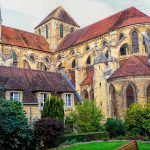 Lisieux is a very religious city with, for a small city, both an enormous basilica AND a big cathedral. Lisieux was the home to three saints, which might explain the presence of so many big religious buildings and institutions (like the Carmel monastery). But the Saint-Pierre cathedral is not exactly an…
Lisieux is a very religious city with, for a small city, both an enormous basilica AND a big cathedral. Lisieux was the home to three saints, which might explain the presence of so many big religious buildings and institutions (like the Carmel monastery). But the Saint-Pierre cathedral is not exactly an… - 10000
- 10000
 Transport Getting There By Air If you plan to come by air, you'll need to fly to the Deauville airport that has some flights from the UK. Deauville is a 30 minute drive to Lisieux by car. Within Lisieux Lisieux is a reasonable bus system in case you want to discover…
Transport Getting There By Air If you plan to come by air, you'll need to fly to the Deauville airport that has some flights from the UK. Deauville is a 30 minute drive to Lisieux by car. Within Lisieux Lisieux is a reasonable bus system in case you want to discover… - 10000
 Built: 15th centuryStatus: Public/MuseumVisitable?: Yes (1st Sunday of the month is free)Notable: xxxxWeb: Chateau de Saint-Germain-de-Livet In a small 800 person village close to Lisieux is a castle that looks like a fairytale castle, the kind kids would draw. The village is called Saint-Germain-de -Livet, and the castle dates back to the 15th…
Built: 15th centuryStatus: Public/MuseumVisitable?: Yes (1st Sunday of the month is free)Notable: xxxxWeb: Chateau de Saint-Germain-de-Livet In a small 800 person village close to Lisieux is a castle that looks like a fairytale castle, the kind kids would draw. The village is called Saint-Germain-de -Livet, and the castle dates back to the 15th… - 10000
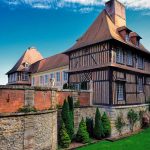 Built: 16th centuryStatus: PrivateVisitable?: Yes, for a fee, gardens and distilleryNotable: Calvados distilleryWeb: Chateau du Breuil Located in the midst of the Calvados region (Normandy) you will find a pretty castle, the Chateau du Breuil, that has been since 1954 a distillery that transforms apples into Calvados (an apple brandy). Located…
Built: 16th centuryStatus: PrivateVisitable?: Yes, for a fee, gardens and distilleryNotable: Calvados distilleryWeb: Chateau du Breuil Located in the midst of the Calvados region (Normandy) you will find a pretty castle, the Chateau du Breuil, that has been since 1954 a distillery that transforms apples into Calvados (an apple brandy). Located…
